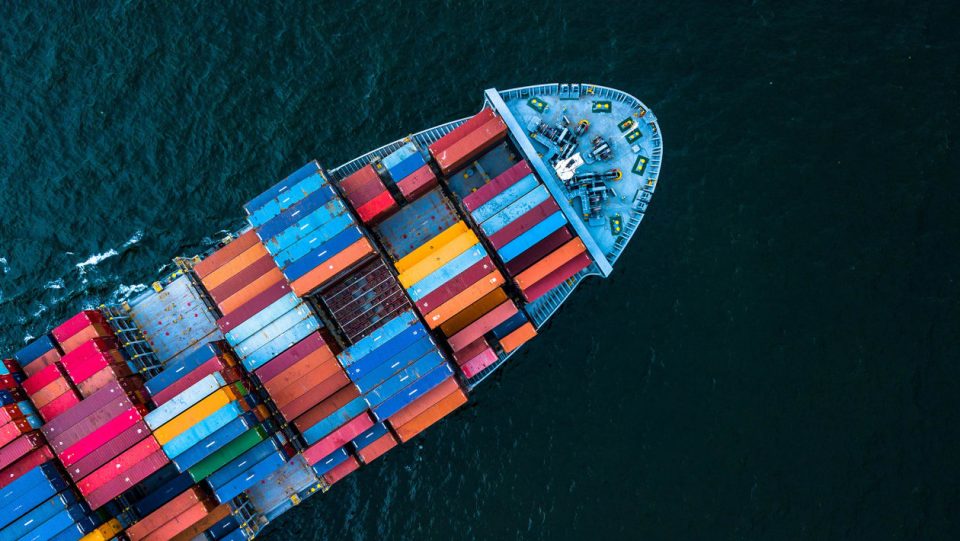The shipping industry is a crucial aspect of global commerce, facilitating the movement of goods across borders and oceans. Its importance cannot be understated. According to the Organization for Economic Co-operation and Development (OECD), approximately 90% of world trade is carried out through shipping. Fostered by the fourth industrial revolution, also known as Industry 4.0, shipping is facing a major shift toward digital standardization. However, the industry currently faces numerous challenges such as overcapacity, low profitability, increasing regulatory pressure, environmental concerns, and economic uncertainty. Nonetheless, digital standardization is seen as a key to unlocking greater efficiency, cost savings, and sustainability in shipping operations.
The Shift Toward Digital Standardization
Digital standardization is the use of common digital formats and technology to simplify shipping operations, communication, and data exchange. This can include things like electronic bills of lading, container tracking systems, and automated vessel management. In recent years, there has been a shift towards digital standardization in the shipping industry. The reason for this shift is twofold: first, shipping companies are under pressure to enhance their efficiency and cut costs in light of economic uncertainty and low profitability. Secondly, there is increasing regulatory pressure to improve sustainability in shipping operations. This is due to shipping being one of the largest contributors to air pollution and carbon emissions.
With the growing adoption of digital technologies such as the internet of things (IoT), big data, and artificial intelligence (AI), shipping companies are able to gather data from various sources and use it to optimize their operations. One example of digital standardization in shipping is the implementation of Electronic Data Interchange (EDI) systems. EDI is a standardized way of exchanging documents, such as shipping orders and invoices, between computers. This system allows for a more efficient, accurate, and timely exchange of information between parties in the supply chain.
Another way that shipping companies are achieving digital standardization is through the adoption of digital shipping standards such as e-Docs, e-Marine, e-Navigation, and e-bill of lading. These digital shipping standards facilitate the exchange of shipping information between stakeholders such as ship operators, port authorities, and cargo owners through standardized electronic formats. This enhances shipping operations by reducing paper usage or reliance on physical documents, streamlining communication, and improving data accuracy. One such example is the introduction of GS1 shipping labels. These labels use standardized barcodes to track shipping containers, providing greater visibility and efficiency in supply chain management.
In addition, digitalization in shipping has extended to the use of technology such as drones, autonomous vessels, and big data analytics. These technologies offer the potential for greater efficiency and cost savings in shipping operations, as well as improved safety and environmental sustainability. Moreover, they provide shipping companies with a competitive edge in an increasingly crowded and challenging industry.
The Main Drivers Towards Digital Standardization
One major player in the push toward digitalization is the shipping industry’s governing body, The International Maritime Organization (IMO). In 2018, the IMO announced its goal for the shipping industry to reduce CO2 emissions by at least 50% by 2050, compared to 2008 levels. In line with this goal, the IMO has adopted digital standardization as a crucial component of shipping operations, encouraging the use of electronic data interchange (EDI) and paperless systems in shipping processes.
This shift toward digital standardization is also being driven by major shipping companies such as Maersk, who have made significant investments in digital technology. In 2018, Maersk introduced its “TradeLens” platform, a blockchain-based shipping solution that allows for seamless and secure data sharing between shipping companies, ports, customs authorities, and other stakeholders. The platform has already seen considerable success with over 110 organizations participating and more than 1 million shipping events recorded.
Benefits of Digital Standardization
Digital standardization in shipping offers potential cost savings for companies and consumers. A recent study by the European Commission estimated that EDI adoption could save the shipping industry billions annually through reduced administrative costs. In addition, digital technology can also facilitate risk management and enhance supply chain visibility, improving overall efficiency in shipping operations.
Digital standardization also allows for improved communication and data sharing between parties in the shipping process, such as shippers, carriers, port authorities, and customs officials. This helps to reduce delays and improve supply chain visibility. Because standardization involves creating uniform processes, systems, and documentation for shipping operations, it eases communication and reduces the likelihood of errors and misunderstandings. This helps to streamline shipping operations and ensure smooth flows of goods. For example, it includes standard measurements for cargo and shipping routes, as well as standard procedures for handling cargo.
Additionally, it can help to increase sustainability and reduce carbon emissions in the shipping industry, through improved planning and fuel consumption management. To illustrate, the use of EDI to share shipping schedules and cargo information allows for efficient route planning, reducing fuel consumption and carbon emissions.
Challenges
Despite the potential benefits, some challenges still remain for shipping companies to fully adopt digital standardization. These include concerns about cyber security and data privacy, as well as the need for major investments in digital infrastructure and training for personnel.
Conclusion and Future Outlook
Overall, digital standardization is crucial for the maritime shipping industry to remain competitive and efficient in the modern age. It not only improves operational efficiency but also helps companies stay compliant with regulations and meet sustainability goals. As technology continues to advance, it is expected that the shipping industry will increasingly adopt digital standardization in the future.

